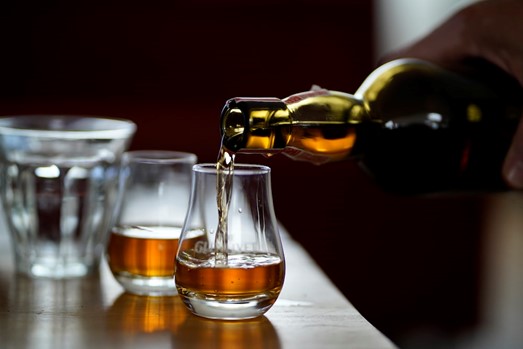Recently, the world of whisky has been opening up to many more countries who are seeking to be enjoying a dram to wind down. As it’s World Whisky Day this Saturday, we decided to look at the drivers behind this increased demand, what this means for whisky lovers in general and potential opportunities for whisky brands to capitalise on this ongoing trend.
It’s been a great year for the water of life, as earlier this year, Scotch exports hit a new high of £6billion[1] with many new consumers worldwide, enjoying a UK classic pastime of drinking whisky. One of these areas for demand has been from India, which has knocked France off 1st place for being the world’s biggest buyer of Scotch by volume[2]. Some of the key drivers for this have been around cultural shifts with whisky being seen as a status symbol, but also to do with a rise in Indians’ spending power.
This increase in demand, looks also to be expanding into other markets. At the end of March, Rishi Sunak announced that the UK would be joining the Comprehensive and Progressive Agreement for Trans-Pacific Partnership or CPTPP. This free trade area of 11 countries, ranging from Australia through to Vietnam will enable the UK to trade more easily with these countries, and with it there will be the elimination of tariffs at around 80% on UK exports of whisky to Malaysia within 10 years.
With an increase in affordable access, whisky will continue to see an ever-increasing demand which will lead to increasing prices and for brands to take advantage of this, they will need a comprehensive understanding of these growing markets (like our work with The Macallan), which will potentially lead them to launching new products such as Diageo’s Bulleit or develop new formats such as RTDs in order to capture the hearts and minds of these new consumers.
Across this development of new products and formats, whisky brands will need to be careful in terms of maintaining their luxury credentials whilst playing to these new audiences – to do this they will need to carry on leveraging existing positionings and unique stories that the brands can truly own. Typically, we have seen the tried and tested positions adopted by whisky brands – cueing age and heritage – remaining as important as ever. The continued rise in demand for aged single malts, and the popularity of classic brands such as Glenlivet and Lagavulin is not set to go away anytime soon.
Distilleries will also, of course, continue to trade on their Scottish origins. Place remains a key factor in the way whisky lovers navigate the category, which means regional distilleries like Loch Lomond or Arran can leverage their locations to good effect for those looking to experience Scotland with a wee dram.
The people, local environment, processes and ingredients that go into making whisky have always been key to the story that sells it. It makes sense then that sustainability and ethical issues will increasingly weave their way into these brand narratives. Ever the change-makers, the ‘Progressive Hebridean Distillers’ Bruichladdich became the first distillery to achieve B-Corp status in 2020.
There are other routes to differentiation despite the crowded market. The success of monkey shoulder shows as much. This quality blended whisky succeeded in large part by aligning itself with the wider growth of cocktails and adopting a fresh brand identity.
Of course, don’t expect the classic brand narratives to go away overnight, but as whisky continues its global growth keep an eye out for brands telling different stories to new drinkers.
[1] Scotch whisky exports hit the £6billion mark for first time – Scottish Daily Express
[2] Scotch whisky: India outdrinks France as top buyer by volume – BBC News


